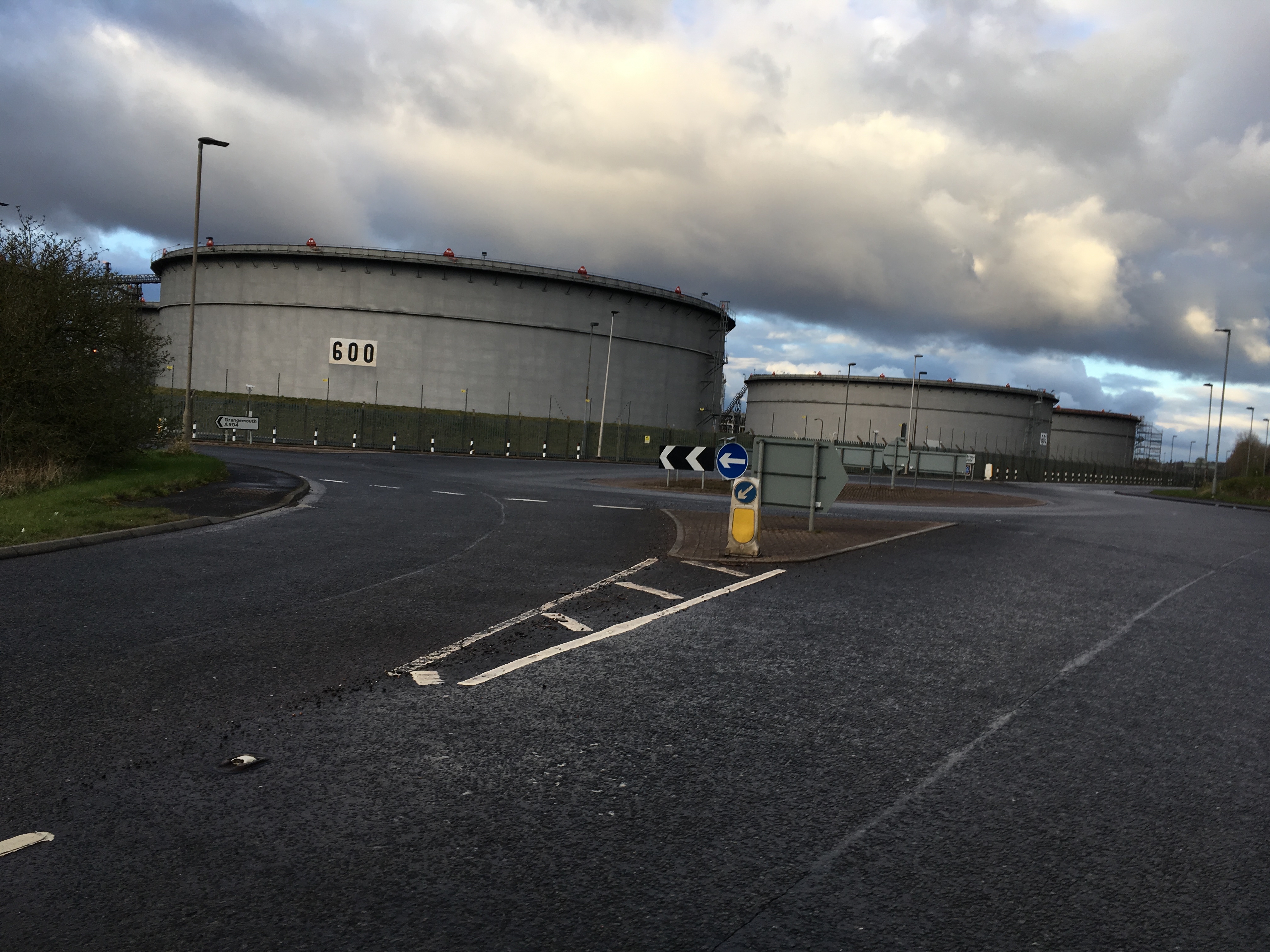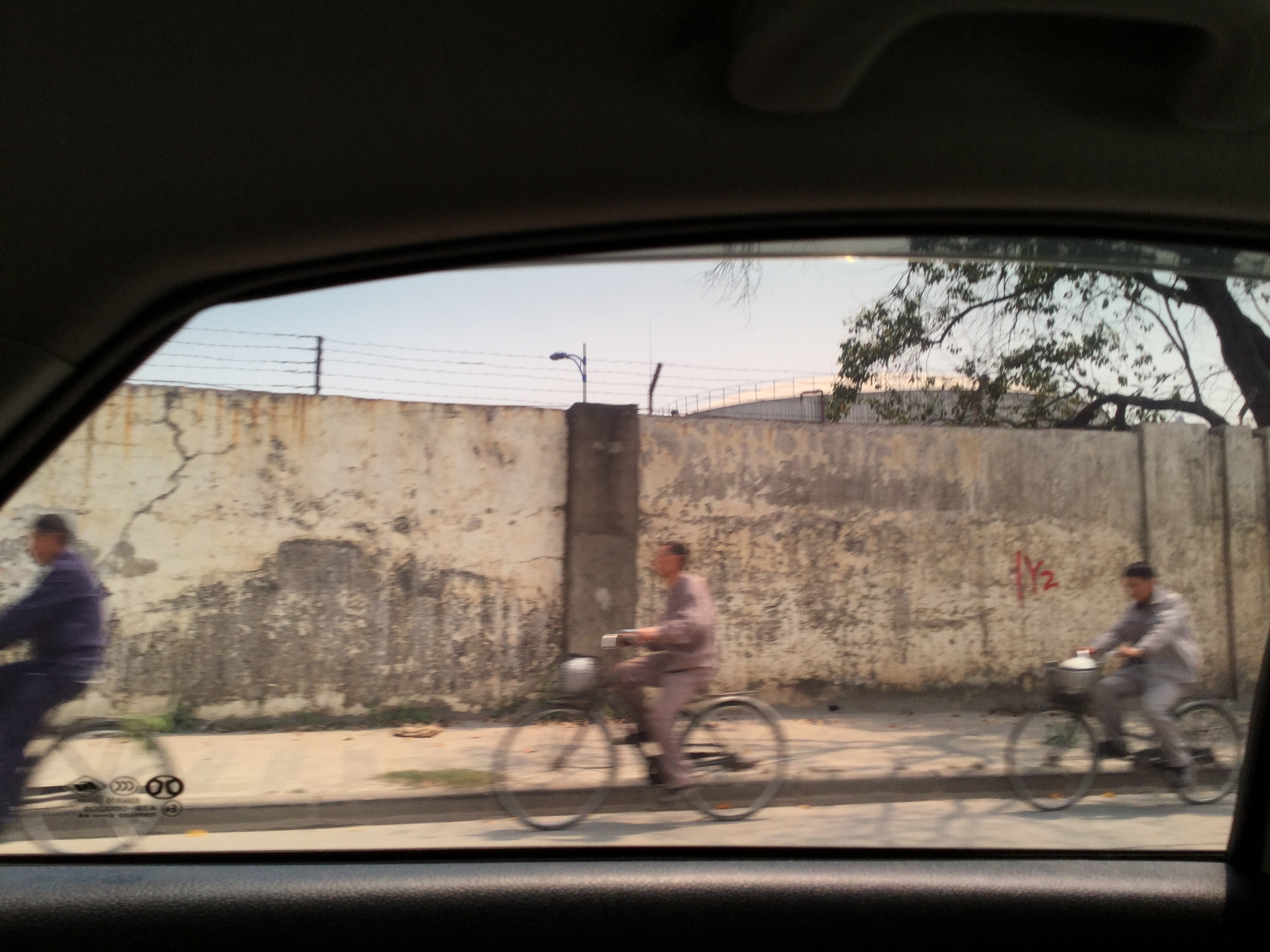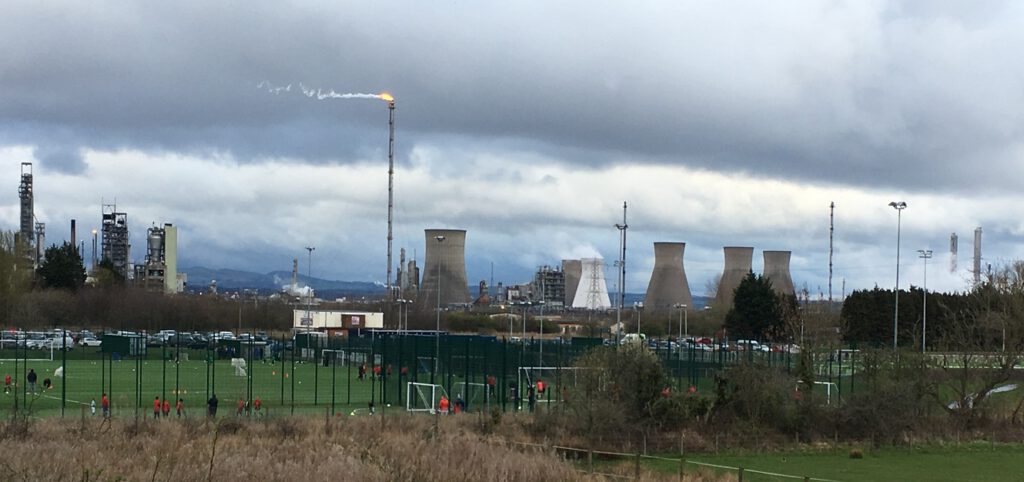Alice Mah, Professor of Sociology, University of Warwick
I have been researching the petrochemical industry for more than five years now. Day in and out, this behemoth industry, with its toxicity, controversies, and sprawling network of activities around the globe, has been looming in the back of my mind. Whenever I am gripped by an idea or question, I am sobered by the nineteenth century psychological concept of the idée fixe. Research can be an obsessive practice, driven by our fixed ideas about the world.
Since I started my research, I have become increasingly concerned about toxic threats: chemicals infecting our house in paints, cleaning products, and carpets; smells of burnt plastic wafting up our street from the printing warehouse; suspected asbestos at every corner in our old house; and, underlying virtually every aspect of everyday life: the petrochemical industry. I have not always been preoccupied with toxic hazards, my husband reminds me, as I eye the leaky old locomotives suspiciously on a family visit to a railway museum.
Yet, mild toxic paranoia aside, studying the petrochemical industry across multiple sites and perspectives has also led me to question fixed ideas, including my own assumptions about industrial practices and consequences. When the stakes are high, impacting powerful elites as well as ordinary people’s health and livelihoods, one needs to tread carefully.
This special issue showcases research findings from our European Research Council-funded Toxic Expertise project on environmental justice and the global petrochemical industry (2015-2020). When I tell people about this project, I get two typical responses. The first is, quite simply: “What is the petrochemical industry?” The second is the opposite. People with their own ideas about the petrochemical industry often ask: “What could you possibly find out that is not already common knowledge?”
What is the petrochemical industry? This is a very good question. It is not common knowledge. In fact, it is difficult to define. The industry has incredibly porous boundaries, operating across the oil, gas, chemical, and plastics industries, amongst others. Even the main corporate petrochemical players span different industries, including: vertically integrated oil and gas companies (multinational and state-owned); large chemical companies; specialty petrochemical companies; and integrated chemical and plastics companies.
Petrochemicals are derived from fossil fuels, used to make plastics and other synthetic materials, such as paints, rubber, and solvents. Originally, the petrochemical industry grew out of the oil and gas industry in the late nineteenth century as by-product of the waste streams from oil refining. In the first half of the twentieth century, the polymer revolution in the chemical industry brought a number of new plastic materials to market (Bakelite, vinyl, nylon, polyethylene, Tupperware, et al), synthesized to replace natural products with cheaper alternatives. During the Second World War, the petrochemical industry became an industry its own right, fuelled by demands for high-octane gasoline, synthetic rubber, and chemical weapons. Governments appealed to women to contribute nylon stockings during the war effort for parachutes and other military uses.
Today, plastics drive petrochemical production, representing eighty per cent of end markets. No wonder, then, that the industry is worried about the public image of plastics.
What could we possibly find out about the petrochemical industry that is not common knowledge? This, too, is a good question. The petrochemical industry is a classic contested industry, alongside the oil, pharmaceutical, tobacco, and sugar industries, all known for manufacturing doubt about the harmful effects of their products.
Yes, the petrochemical industry is a major polluter, dependent on fossil fuels, and the subject of numerous controversies, accidents, and disasters. As such, many people think our interest must be in fingerprinting dirty companies for their negligence: think Erin Brockovich. But unfortunately, such cases are rare and costly, and beyond the scope of our study.
In the Toxic Expertise project, we are interested not only in the extreme cases, but also in the ordinary cases of “structural and slow forms of violence in toxic landscapes”. We also highlight cases outside the legal and political frameworks of western liberal democracies. For example, there have been violent crackdowns on environmental protests over petrochemical plants in China and police shootings and human rights abuses of migrant petrochemical workers in Saudi Arabia.
When it comes to questions of corporate sustainability, people often wonder how we can get beyond the wall of corporate public relations. Indeed, I have been hitting my head against this wall for some time now.
The problem with such a complex object of study is the difficulty of getting inside— or above, or around— for an alternative view. Even up close, petrochemical complexes are alienating structures.
Last month, I walked with a local environmental activist on a “toxic tour” of Bo’ness Road, which runs through the Grangemouth refinery and petrochemical complex in Scotland. Somewhat unusually, Bo’ness road cuts directly through the middle of the industrial area and is open to the public. The corporate giant INEOS plans to close the road, a move that has been met with local opposition. As we walked along the “dirty oil road”, the environmental activist pointed out several of the top polluters in Scotland. Recently, he said, there has been renewed interest from journalists in Grangemouth because of the plastics issue. However, it has been difficult for him to convey the connection between industry and marine plastic litter, beyond pointing out the polluting industrial facilities and noting their end markets.
 Top of Bo’Ness Road, Grangemouth, April 2019
Top of Bo’Ness Road, Grangemouth, April 2019
Towards the end of the Bo’Ness toxic walk I could smell a familiar pungent aroma. Maybe it was psychological; the activist told me that the industries increased in toxicity as we walked along the road. The strength of petrochemical smells depends on emission levels, wind direction, and the person doing the smelling. Smells can also be misleading. Some of the most toxic chemicals have none at all.
Last spring, the anthropologist Loretta Lou and I travelled to petrochemical villages on the outskirts of a major city in South China. From the moment we stepped out of the nearest underground station, about five kilometres away from the nearest petrochemical plant, I felt like I had entered an acrid chemical cloud, which was magnified by the high urban air pollution that day.
Loretta couldn’t smell anything. As she tried to tune into the smell that I described, she asked me questions: what kind of smell was it, exactly, and where did it sit on my tongue and throat? This tuning in exercise reminded me of high-pitched sounds, which irritate some people, but which I cannot hear unless I concentrate. As we approached the petrochemical villages, the smell became more like a total body experience. The roads were narrow, dusty, and unpaved, filled with workers on bicycles and enormous trucks. This landscape was strangely familiar, resembling the polluted peri-urban petrochemical villages in Nanjing, China that Xinhong Wang and I researched in 2016.
 Petrochemical workers on bicycles, South China, March 2018
Petrochemical workers on bicycles, South China, March 2018
In our research, it has been important to get close to petrochemical facilities, to breathe the air, witness the landscapes, and talk with people. But it has also been important to investigate the industry beyond the fenceline: listening to keynote talks and panel discussions in petrochemical industry conferences; attending industry training sessions and stakeholder engagement events; reviewing corporate investment plans and sustainability reports; and looking systematically at regional petrochemical emissions, related health inequalities, and networks of corporate power.
As our multi-scale, multi-site, and multi-method research on the petrochemical industry comes together, we are beginning to make connections between the different parts and the whole: the corporate drivers; the investment flows; the chemical properties of carbon; the geopolitical significance of shale gas; and the risk perceptions and environmental injustices in different “fenceline” petrochemical communities.
In 2013, the environmental health leader Theo Colborn argued that “we’ve got to make the fossil-fuel connection” between fossil fuels and petrochemicals, particularly the violence of US shale gas extraction and toxic exposures. We need to extend this call to make the “petrochemical connection:” the crucial link between fossil fuels and plastics, underlying the global health and environmental crises of toxic pollution, climate change, and plastic waste. This is the focus of the book I am currently writing, a critical investigation of the petrochemical value chain: or, how the petrochemical industry creates value across its commodity chain, from fossil fuels to basic petrochemicals to plastics and other end markets.
With more plastic produced in the past ten years than ever before, and climate change reaching the brink of submerging small island nations, it is clear that “business as usual” within the global petrochemical industry is unsustainable.
After decades of navigating environmental controversies, the petrochemical industry has become adept at the business of corporate social responsibility. In particular, industry is worried about the plastics crisis. It threatens their social license to operate, as David Brown describes in this special issue in an account of the 2019 World Petrochemical Conference in Texas. However, as I have seen over the past five years, the industry is always poised to tackle another crisis, a recurrent theme within global capitalism.
With all the crisis talk, environmental “bads” are easily played off against one another. Plastics are pitched as the saviour in the fight against climate change: “higher value” (fossil fuels are captured in plastics rather than burned directly as fossil fuels); lightweight (in transportation materials, reducing emissions); insulating (for energy use in buildings); and part of the green transition (a key material in solar panels, wind turbines, and electronic vehicles). And if we don’t want the microplastics from fleece choking our marine wildlife, then what about the plight of the merino sheep?
Technological solutions to fix problems abound, another recurring theme within our modern risk society. Chemical recycling is one recent controversial example: the proposal to create even more petrochemical plants to reduce plastics back to chemicals, rather than relying on current mechanical recycling, which cannot meet global plastics demand.
While the solutions may seem obvious— good, bad, or inevitable— they are not. We rely on the petrochemical industry and other polluting industries for our modern lifestyles, including medicine and urban infrastructure. It is difficult, if not impossible, to disentangle “essential” from “non-essential” petrochemical products and processes. When we focus on one problem, such as climate change, the unintended consequences of the proposed solution throw up yet another problem. What will we do with our discarded solar panels and electronic cars in the future? Electronic waste frequently tops the list of global toxic threats.
The underlying problem goes back to the Club of Rome’s 1972 report on the Limits to Growth: the enduring myth of unlimited growth. As a world fuelled by an obsession with growth, we are caught in the societal idée fixe that we can endlessly increase our consumption without ruining the planet.
This special issue brings together research by the Toxic Expertise research team on the global petrochemical industry in relation to corporate responsibility and environmental justice. Each article contributes to making the petrochemical connection, using different methods, sites, and perspectives to shed light on part of the complex industrial system.
In an evocative article tracing petrochemical connections with Franco’s legacy in Spain, Chris Waite reflects on the troubled past and uncertain future of a petrochemical refinery in Santa Cruz de Tenerife. The geographer and urban planner Thomas Verbeek presents the findings of a spatial network analysis of top petrochemical companies, which demonstrate shifting elite power constellations. Reporting on insights from the 2019 World Petrochemical Conference in San Antonio, Texas, David Brown discusses the “existential crisis of the petrochemical industry” in the aftermath of the marine plastics crisis. Next, the environmental scientist Calvin Jephcote discusses the historical emergence and endurance of regional health inequalities in the European petrochemical landscape. Finally, in an insightful book review of an Italian book about autonomous workers’ collectives in the petrochemical complex of Porto Marghera in Venice, Lorenzo Feltrin introduces English audiences to the case where he will conduct field research this summer.
To round off this issue, we are republishing three articles from our research team about different petrochemical landscapes and lived experiences: Loretta Lou’s 2018 article “‘Village Besieged’: An Elegy for Victims and Protest Against Taiwan’s Petrochemical Pollution,” a moving account of the role that music can play in raising awareness about the injustices of petrochemical pollution; Thom Davies’ 2017 article “Toxic Geographies: chemical plants, plantations, and plants that will not grow” about the “noxious residues” of “living intimately with chemicals” in Cancer Alley, and Cynthia Wang’s 2015 “Reflections on the Tianjin Explosions” written in the aftermath of the Tianjin chemical explosions in August 2015, and an important reminder of the ever-present dangers of living alongside toxic hazards.
Main image: Grangemouth refinery and old BP social club, April 2019. Photo credit: Alice Mah
